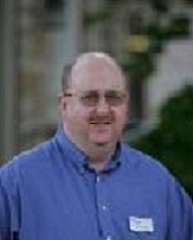March 6, 2018
What's the key to Community Vitality Success?

David Key is celebrating his 30th year in Extension. He shared the community development role along with his Ag responsibilities until 2007 when Meadowlark District was formed and he became the first Director.
Key believes an agent who is hired to do community development from the beginning has an advantage. “The hardest part of changing roles,” Key said, “is the transition period when people still come to me thinking I should play all the Ag roles I formerly played. You have to expect a weaning period.”
Key says that the most important part of being a community vitality agent is getting out and getting active in the community. He inserted himself into his counties’ economic development and chamber efforts and was intentional in listening and learning. “I needed to learn what their purpose was and how we fit. I had to assure them that Extension wasn’t there to compete, but to partner and support.” Nancy Gafford, who worked with David as an extension agent and then in the economic development field agrees, “One of David’s greatest assets is his willingness to share, not only his time and energy, but all of Extension’s resources. They are such a valuable resource for the rest of us in this field.”
David received the 2015 Kansas PRIDE Partner award for his work with five PRIDE communities in Meadowlark District. He loves helping communities move past start-up to figure out what they’ll adopt and accomplish.
Key believes that K-State Research and Extension’s strength is in building capacity in people. “The more we get out into the community with our programming, the more successful our communities will be.”
When Meadowlark District began using an e-Newsletter, their reach grew exponentially; they add every person who participates in programming to the email list—even if they’re not in their district. Key actively works with the Glacial Hills Resource Conservation and Development Council (RC&D) and with the Northeast Kansas Enterprise Facilitation group and connects himself to their Facebook so they can cross-promote what each partner is doing.
One outcome of this connectedness, is the large attendance that Meadowlark District gets for their community vitality events. Almost 80 participants attended two district grant workshops this winter and when they offered Board Leadership Series in two sites, each site received 12-15 registrants.
“People have really appreciated the new community vitality programs that KSRE has developed,” Key said. He remembers saying to KSRE Leadership, “If you want us to get serious about doing community development work, you have to give us more support.” That support has made a difference.
Key was on the design team for the Board Leadership Series and a presenter for six years. He doesn’t just partner with those in his own district, he partners with neighboring counties to expand the educational impact in the area.
"Intentionality in community development makes the PDC more active and successful," Key says, "when you have the background and the relationships, it works."
Key gets his satisfaction from the impact he sees from KSRE programming. He loves to hear, “PRIDE made a big difference in our community” or see that more than 750 people have benefited from Board Leadership Series across the state. He is proud of the work he did to help the Youth Entrepreneurship Academy get started and the role he played in the Main Street project in Seneca, but “There is always more to do.” Congratulations to David Key who teaches us all how to be more effective!